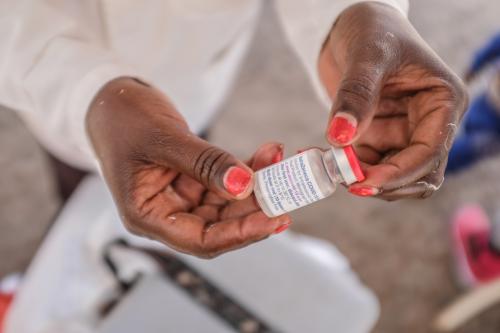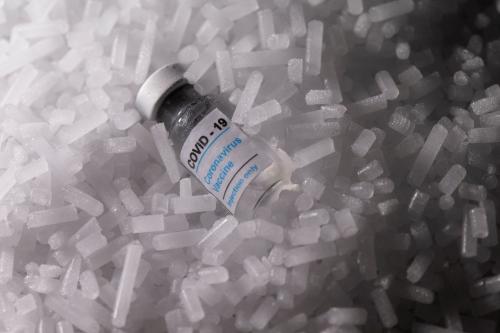Last month, the Brookings Africa Growth Initiative (AGI) released its annual Foresight Africa report, which explores top priorities for the region in the coming year. Among other themes, the 2022 edition examines major trends for Africa in 2022, including its economic recovery from the COVID-19 pandemic, public health, the empowerment of African women and girls, climate change, technological innovation, and the region’s external relations
Chapter 2, “Public health: Ensuring equal access and self-sufficiency,” specifically examines the future of public health in Africa, including an update on COVID-19 vaccination efforts in the region. A major theme is the challenge of vaccine inequity. As Figure 1 shows, the distribution of COVID-19 vaccines so far has been unequal, with many countries offering boosters while Africa waits for its first doses.
Figure 1. Africa has received a very small share of the global COVID-19 vaccine supply
Source: Ordu, A., & Golubski, C. (Eds.). (2022). “Foresight Africa: Top priorities for the continent in 2022.” Washington, D.C.: Brookings Institution.
Figure 1 illustrates Africa’s COVID-19 vaccination statistics between March and December 2021. Notably, as of the end of 2021, less than 20 percent of Africa’s population had received at least one dose, while only 0.1 percent of the population had received a booster shot. These numbers are stark compared to the rest of the world, especially South America, where almost 80 percent of the population has received at least one dose, and Europe, where 22 percent of the population has already received a booster shot.
Figure 2 illustrates a few of the challenges to addressing vaccine inequity in sub-Saharan Africa. For example, even though the region’s cost per vaccine dose is lower, its relative costs are significantly higher (Figure 2).
Figure 2. Vaccine costs in sub-Saharan Africa remain relatively high
Source: Ordu, A., & Golubski, C. (Eds.). (2022). “Foresight Africa: Top priorities for the continent in 2022.” Washington, D.C.: Brookings Institution.
In his Foresight Africa 2022 viewpoint examining these inequities, Dr. Michel Sidibé, African special envoy for the African Medicines Agency of the African Union, urges Western countries to transfer their unused vaccines to COVAX and recommends that COVAX collaborate with the African Vaccine Acquisition Task Team (AVATT) to ensure an optimal allocation and distribution of vaccines in the region given AVATT’s pooled resources for vaccine procurement.
For more on vaccine inequity, see Sidibé’s Foresight Africa viewpoint “Vaccine inequity: Ensuring Africa is not left out” and AGI’s past event “Accelerating COVID-19 vaccinations in Africa.” For more on logistical challenges to COVID-19 vaccination campaigns in Africa, see the Foresight Africa 2021 viewpoint “Navigating the complexities around a COVID vaccine in Africa.”









Commentary
Figure of the week: Vaccine inequity in Africa
February 4, 2022